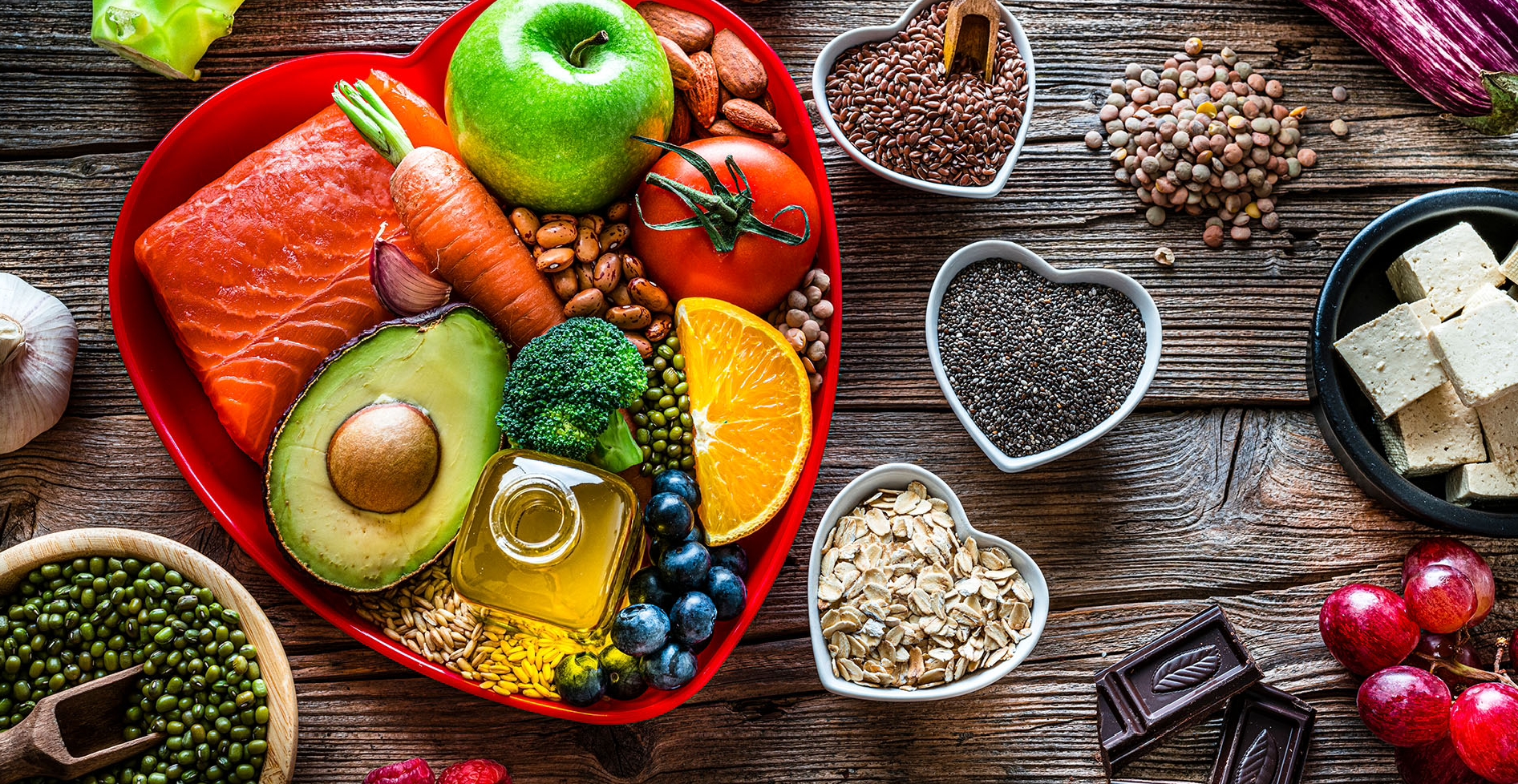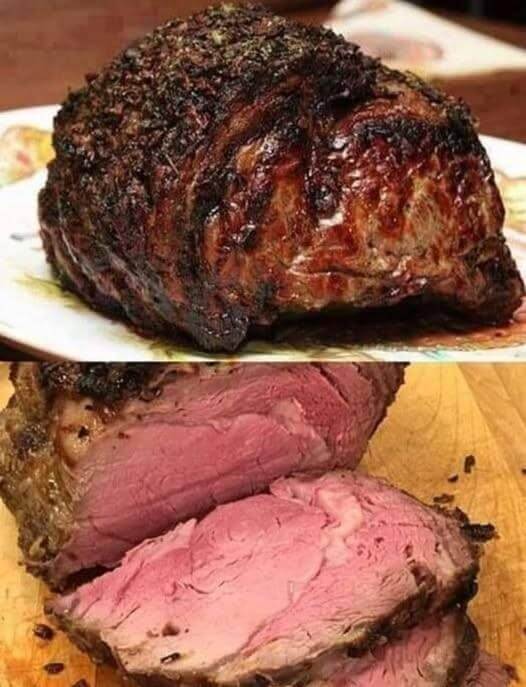Rosemary-Prime-Dijon-Rib
Introduction
This Rosemary-Prime-Dijon-Rib recipe is an elegant and flavorful way to cook a prime rib roast. The mustard and horseradish rub create a zesty, savory crust, while fresh thyme, rosemary, and mustard seeds infuse the meat with aromatic flavor. This dish is perfect for a special occasion or holiday meal. Let’s walk through the steps to achieve a succulent, perfectly cooked prime rib roast!
Ingredients
- 2 white onions, cut into 1-inch (2.5 cm) slices
- ¼ cup Dijon mustard
- 1 prime rib roast (about 6 lbs/2.7 kg)
- 1 1/2 cups (375 ml) kosher salt
- ⅓ cup (75 ml) prepared horseradish
- 2 tbsp (30 ml) mustard seeds
- 2 tbsp (30 ml) fresh thyme, chopped
- 2 tbsp (30 ml) fresh rosemary, chopped
- 2 tbsp (30 ml) ground black pepper
- 5 bay leaves, crumbled
- 3 egg whites
Instructions
1. Preheat the Oven
Preheat your oven to 450°F (230°C) to start with high heat for the initial searing.
2. Prepare the Roasting Pan
Place the onion slices in the bottom of a roasting pan. These will act as a flavor base and also elevate the roast for even cooking. Set aside.
3. Brush the Prime Rib
Evenly brush the entire prime rib roast with Dijon mustard. This mustard layer helps the salt crust adhere to the meat and adds flavor. Set the roast aside.
4. Make the Salt Crust Mixture
In a large bowl, combine the following ingredients:
- Kosher salt
- Prepared horseradish
- Mustard seeds
- Fresh thyme
- Fresh rosemary
- Ground black pepper
- Crumbled bay leaves
Add the egg whites and stir until the mixture reaches the consistency of wet sand. This will be your herb and salt crust mixture.
5. Apply the Salt Crust
Press the salt mixture evenly over the fat side and the ends of the prime rib. Be sure to coat the meat generously, as this forms the flavorful crust.
6. Roast the Prime Rib
Place the seasoned prime rib, bone side down, on top of the onion slices in the roasting pan. Roast in the preheated oven at 450°F (230°C) for 15 minutes to sear the outside of the roast.
7. Lower the Oven Temperature
After 15 minutes, reduce the oven temperature to 325°F (160°C). Continue roasting for 20 minutes per pound (450 g). For a medium-rare roast, cook until an instant-read thermometer inserted into the thickest part of the meat reads 130°F (55°C).
8. Rest the Roast
Once the roast is done, remove it from the oven and transfer it to a cutting board. Let it rest for 20 minutes before slicing. Resting ensures the juices redistribute throughout the meat, making it tender and juicy.
9. Remove the Salt Crust
Before slicing, remove and discard the salt crust. It will have formed a hard layer on the roast.
10. Serve and Enjoy!
Once rested and crust removed, slice the prime rib and serve. Enjoy with your favorite sides!
Frequently Asked Questions (Q/A)
Q: Can I adjust the cooking time for different doneness?
A: Yes! The times mentioned are for a medium-rare roast. To adjust for different doneness:
- Rare: 120°F (49°C) internal temperature. Reduce cooking time slightly.
- Medium: 140°F (60°C) internal temperature. Add a few more minutes.
- Well-done: 160°F (71°C) internal temperature. Cook for a longer time.
Q: What if I don’t have horseradish?
A: If you don’t have horseradish, you can replace it with an extra tablespoon of Dijon mustard for a slightly tangier flavor or use a small amount of wasabi paste for a spicy kick.
Q: Can I use a different type of salt?
A: Kosher salt is recommended for its texture, but you can substitute it with sea salt or table salt. If using table salt, reduce the amount as it is finer than kosher salt.
Q: How can I make this recipe ahead of time?
A: You can prepare the roast up to the point of applying the salt mixture. Then, wrap it tightly and refrigerate it overnight. When ready to cook, bring it to room temperature for about 30 minutes before roasting.
Q: How do I know when the prime rib is done cooking?
A: The best way to ensure your prime rib is perfectly cooked is by using an instant-read thermometer. Insert it into the thickest part of the meat, avoiding the bone. The ideal temperature for medium-rare is 130°F (55°C).
Q: Can I use a different herb mix for the crust?
A: Absolutely! You can experiment with different herbs like sage, oregano, or even garlic to add a unique flavor. Fresh herbs work best, but you can use dried herbs if needed.
Q: Can I cook this in a slow cooker or on the stovetop?
A: While this recipe is designed for oven roasting, you could slow-cook it at a low temperature (around 275°F or 135°C), but you won’t get the same crispy crust. Using the oven ensures a perfect sear followed by a slow roast.
Q: What are some good side dishes to serve with prime rib?
A: Prime rib pairs wonderfully with roasted vegetables, mashed potatoes, creamed spinach, or a side salad with a light vinaigrette. For something extra special, you could also serve a horseradish cream sauce on the side.
Conclusion
This Rosemary-Prime-Dijon-Rib recipe is a perfect way to create a tender, flavorful prime rib with a beautifully seasoned crust. With a combination of fresh herbs, mustard, and horseradish, it brings out rich flavors that pair wonderfully with roasted sides or salads. Whether you’re preparing for a holiday feast or a special dinner, this recipe will impress your guests and satisfy your taste buds!
Happy cooking, and enjoy your delicious prime rib!

